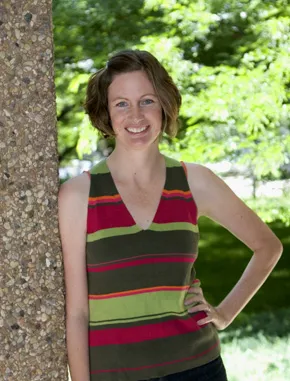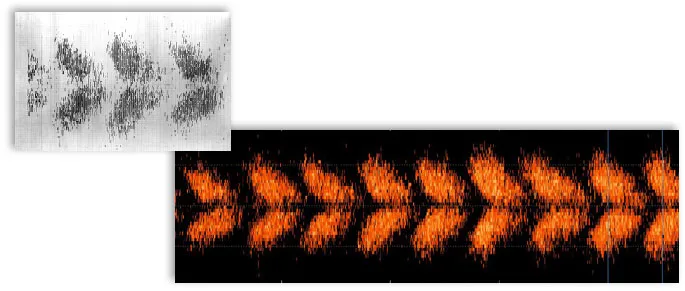Aimee Norton - Astronomer
Uncovering the secrets of the Sun

Aimee Norton
Photo by Carlye Calvin, UCAR
As a teenager in the 1980s, Aimee Norton was an aspiring astronaut. At that time, the conventional path to outer space usually meant enrolling in the Air Force Academy, something that didn't appeal to her. She would eventually find herself drawn to the field of astronomy instead.
"Astronomy is a great way to study space without actually going there," Aimee says. "It's fun to get new data, analyze graphs, and decipher the secrets of the Sun."
Aimee works in NCAR's High Altitude Observatory, a division that studies the Sun and its effects on Earth's atmosphere. She does everything from making observations of the Sun and analyzing data to designing new instruments that fly aboard spacecraft. Her research helps expand our comprehension of how solar variability affects Earth's climate. And by understanding the Sun, our closest star, we can better understand other stars and their physical processes.
The Sun's magneto-hydrodynamic waves are one of Aimee's main research interests. These fluid waves in the plasma of the Sun's atmosphere move along or across magnetic fields, which means they must obey the physical laws that govern magnetic fields and are therefore more complicated than waves found in nonmagnetized fluid. Aimee scours observed data for signatures of the waves, whose amplitudes are small and hard to measure.
Recently, she's studied the patterns formed by the locations of sunspots (temporarily cool, dark, magnetic areas on the Sun) that arise from a large, migrating reservoir of magnetism inside the Sun. Her goal is to understand more specifically how the Sun's interior magnetic field changes over time.
The number and location of sunspots fluctuate over time, so that when they are plotted on a graph the pattern resembles the wings of a butterfly. Scientists aren't exactly sure what causes this pattern, which was first observed in 1904, although they know it has to do with the way the magnetic field within the Sun is regenerated during its 11-year cycles. "The sunspot cycle is one of the great mysteries in solar physics," Aimee says.

The original butterfly diagram (top left), drawn by E. Walter Maunder and Annie S.D. Maunder in 1904, is preserved in the NCAR Archives. It demonstrated for the first time the movement of sunspot emergence from the poles toward the equator over the Sun's 11-year cycle. The color image (right) represents sunspot activity from 1900-1993.
NCAR High Altitude Observatory and NASA MSFC
Aimee is currently part of a team developing an instrument called the Helioseismic Magnetic Imager that will be launched aboard a NASA spacecraft in 2008. Her role is to help design a polarimeter that observes the Sun's magnetic fields.
Working on both research projects and instrument development is one of the highlights of her job. "I enjoy working partly on research and partly on an instrument," she says. "Research results can take a long time to fully understand, but you can see progress on instrument development that is more concrete."
Aimee read a lot of science fiction as a young adult and enjoyed the challenge of math and physics. She majored in nuclear engineering at Texas A&M University, following in the footsteps of family members who were engineers. "I should have just majored in physics," she says in hindsight, "but at the time I thought engineering was more practical."
During summer internships at Los Alamos National Laboratory, Aimee was introduced to the culture of research science and met a few astronomers. "It made me realize that I could do research for a career and that this was what I wanted," she says. She went on to earn a doctorate in astronomy at the University of California, Los Angeles, and completed a postdoctoral appointment at Stanford University before joining NCAR.
In addition to the intellectual challenge of a career in science, Aimee stresses that she especially enjoys working with other scientists. "It's refreshing to collaborate with great minds that don't hesitate to work through a problem," she says. She also feels privileged to be able to work at a major research institute such as NCAR.
Aimee's long-term goals include teaching physics and astronomy at the university level. "Teaching lets you stay in touch with the reason you became a scientist in the first place," she says. "It re-inspires you." In the meantime, she looks forward to seeing the Helioseismic Magnetic Imager become operational and traveling to its launch at Cape Canaveral in 2008.
Update: Aimee Norton is now on the faculty of the Centre for Astronomy, James Cook University, Townesville, Queensland, Australia (April 2010).
by Nicole Gordon
July 2005